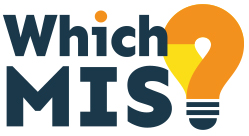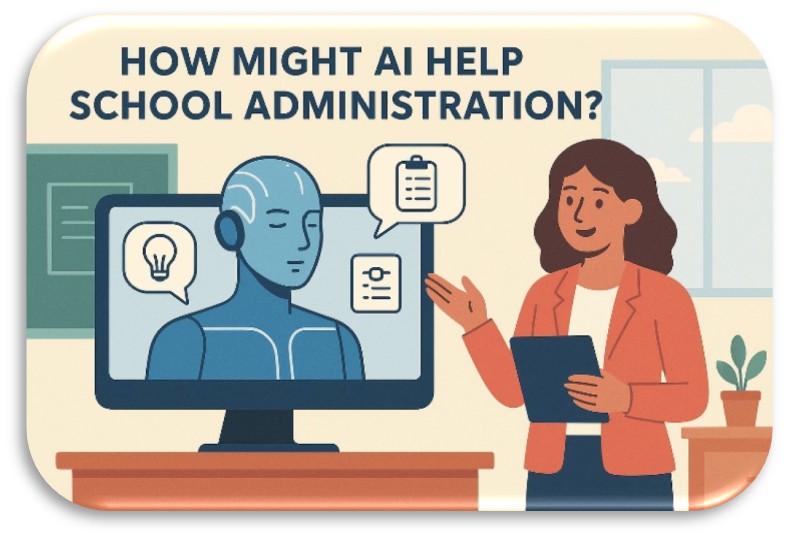Artificial intelligence (AI) is quickly becoming one of the most discussed innovations in education, and with good reason.
While much of the conversation currently focuses on teaching and learning, some of the most immediate and practical benefits of AI are emerging in school administration.
For school business managers, data managers, and trust operations teams, AI promises to reduce repetitive workload, improve accuracy, and free up time to focus on strategy, leadership, and pupil outcomes.
Many MIS providers, including Arbor, Bromcom & SIMs Next Gen are embedding AI into the into their core management systems, but it’s still fairly new technology so at WhichMIS?, we’ve been exploring how AI tools and features are already helping schools and multi-academy trusts (MATs) streamline administrative processes, and how they’re likely to evolve.
Automating Routine Tasks
Many administrative processes in schools follow predictable patterns: recording attendance, reconciling payments, scheduling cover, or generating reports.
These are precisely the kinds of activities AI excels at.
Modern MIS platforms are beginning to embed AI to automate everyday actions such as:
- Predictive attendance alerts – identifying pupils at risk of absence based on historical patterns.
- Smart data entry – automatically completing repetitive fields or suggesting corrections to reduce errors.
- Automated communications – generating reminders, notifications, and updates for parents or staff based on triggers such as lateness or missing data.
For office teams, this automation doesn’t replace human oversight, it removes the repetitive manual work that clutters the day, letting staff focus on higher-value tasks.
Data Analysis and Decision Support
Schools and MATs hold vast quantities of data: on attainment, attendance, behaviour, finance, and safeguarding.
Turning that data into actionable insight is a persistent and time-consuming challenge.
AI-powered analytics tools can process large datasets in seconds, spotting trends or anomalies that humans might miss. For example:
- Identifying links between attendance and attainment to target interventions.
- Highlighting schools or departments within a MAT that may need support.
- Forecasting pupil numbers, staffing requirements, or budget pressures.
When embedded within MIS dashboards, these AI insights can give school leaders near real-time visibility and inform quicker, more confident decisions.
Improving Communication and Workflows
Natural language processing (NLP), the AI technology behind tools like ChatGPT, Gemini & Co-pilot, is being used to improve how schools communicate and manage workflow.
Imagine an MIS or HR system that allows users to simply ask questions in plain English:
- “Show me attendance for Year 8 girls over the last term”
- “Create a letter to parents of pupils with outstanding payments”
AI can then interpret the request, pull relevant data, and generate documents or reports automatically.
This human-friendly interface could significantly reduce the training burden for new staff and make powerful systems accessible to everyone, and not just data specialists.
Enhancing Compliance and Data Quality
Data protection and compliance are key responsibilities for every school. AI can help monitor and maintain data integrity across systems.
For example, AI tools can:
- Flag inconsistencies or missing information in pupil or staff records.
- Detect potential GDPR risks, such as outdated permissions or duplicate personal data.
- Support Subject Access Requests (SARs) by automatically identifying and redacting personal data in documents or emails.
Some DfE digital and technology standards already encourage schools to “use automation to support data accuracy and security” — and AI is likely to become a vital part of that process.
Supporting Financial and Resource Management
AI is also being applied to help schools and MATs manage budgets and resources more intelligently.
Finance systems are beginning to offer predictive analytics that identify budget variances before they happen, for example:
- forecasting staff costs
- energy consumption
- procurement trends.
Combined with AI-driven insights from MIS and HR systems, schools can make better-informed decisions about resource allocation, ensuring funding is directed where it has the greatest impact.
Reducing Workload and Supporting Wellbeing
One of the greatest promises of AI in administration is its potential to reduce workload.
According to the DfE’s Workload Reduction Toolkit, administrative burden is a major contributor to stress and staff turnover. By automating routine tasks and providing “virtual assistants” to help with queries and reporting, AI can give staff back valuable time, supporting wellbeing as well as efficiency.
As one school business leader recently put it:
“AI isn’t about replacing people – it’s about removing the friction that stops them doing their best work.”
Balancing Innovation with Responsibility
While AI offers exciting opportunities, schools must also approach it responsibly. DfE guidance stresses the importance of transparency, data protection, and human oversight in any AI deployment.
Schools should ensure that:
- Data used by AI systems is secure and compliant with GDPR.
- AI recommendations are always reviewed by human decision-makers.
- Staff and governors understand both the benefits and limitations of AI tools.
In other words, AI should support professional judgement, not replace it.
https://www.gov.uk/government/collections/using-ai-in-education-settings-support-materials
Looking Ahead
Over the next few years, we’re likely to see AI become a seamless part of every school’s digital ecosystem. MIS vendors are already experimenting with generative AI to produce summary reports, automate policy creation, and support procurement or compliance tasks.
As these technologies mature, the most successful schools and trusts will be those that:
Use AI to enhance, not replace, human expertise.
Embrace innovation with clear governance and ethics.
Invest in digital literacy for staff.

In Summary
AI has the potential to transform school administration by streamlining processes, improving data insight, and supporting staff wellbeing. But its greatest value lies in partnership with skilled professionals who understand their schools, pupils, and communities.
At WhichMIS?, we believe the future of education technology isn’t just about smarter systems, it’s about empowering smarter decisions. AI is an exciting new tool to help achieve exactly that

